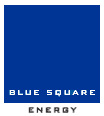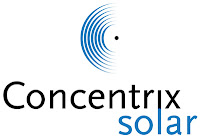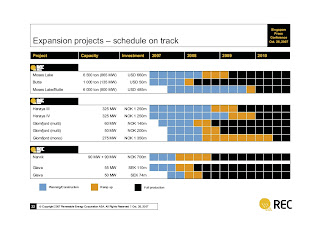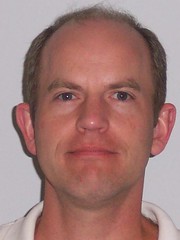 "Be Ambitious! Seek the inspiration to bring happiness to humanity through your work in PV."
"Be Ambitious! Seek the inspiration to bring happiness to humanity through your work in PV."
Since those closing words from the 17th International Photovoltaic Science and Engineering Conference (PVSEC-17) General Chairperson Professor Masafumi Yamaguchi (Toyota Technological Institute), the information packed Closing Address and Opening Address presentations have been uploaded to the PVSEC-17 Program page.
1439 Conference participants from around the world converged on the Fukuoka International Congress Center in Fukuoka, Japan, from December 3-7, 2007, for the 17th International Photovoltaic Science and Engineering Conference (PVSEC-17). The PVSEC-17 Conference was dominated by Japan with 769 participants while the top six (6) was rounded out by Korea 182, Taiwan 123, USA 95, Germany 74, and China 22. The simultaneous PVSEC-17 Exhibition featuring 46 Exhibitors attracted 5027 visitors over the course of 3 days.
During the PVSEC-17 Conference, 627 Papers from 36 countries were presented including about 364 Poster Presentations. Germany vaulted to third in Papers from their participant attendance rank of fifth. Chairperson Professor Yamaguchi noted the above trend ratio of Papers to Attendees for PVSEC-17 versus peer international photovoltaic conferences: EU PVSEC, IEEE-PVSC, and WCPEC.
First, here is an outline of the PVSEC-17 Conference Program by topic Area:
Area 1 Novel Materials and Devices
Area 2 III-V Materials and Devices for Concentrator and Space PV Systems
Area 3 Crystalline Silicon Solar Cells and Technologies
Area 4 Amorphous & Nano/Microcrystalline Silicon Based Solar Cells and Related Materials
Area 5 CIGS, II-VI and Related Thin Films and Cells
Area 6 PV Modules and System Components
Area 7 Terrestrial PV Systems
Area 8 PV Programs, Industries, Market, and Environment
Here are the links to Oral Sessions segmented by Conference day: December 3, December 4, December 5, December 6, and December 7.
Here are the Poster Sessions with focus topic Area(s):
Poster Session 1 Area 3, Area 7
Poster Session 2 Area 3
Poster Session 3 Area 5, Area 8
Poster Session 4 Area 2, Area 6
Poster Session 5 Area 1, Area 4
Poster Session 6 Area 1, Area 4
The Closing Address presentation includes:
Program Summary
Program Highlights
Awards Commendation Ceremony
Readers are directed to review the selected Program Highlights for themselves (Closing Address, pp. 7-15).
Below, I have included the Paper, Poster, and Young Researcher Award winners. Please note a number of Areas have co-winners.
Paper Awards
Area 1
4O-A3-02 SCANNING PROBE MICROSCOPE STUDY OF DYE-SENSITIZED TiO2(110)
A. Sasahara1,2, M. Ikeda1, N. Koide3, L. Han3 and H. Onishi1
1Kobe University, Japan, 2Japan Science and Technology Agency, Japan, 3Sharp Corporation, Japan
Area 2
6O-B11-03 DEVELOPMENT OF SPACE SOLAR SHEET
T. Kodama1, H. Yamaguchi1, N. Takahashi1, T. Agui1, H. Washio1, K. Nakamura1, T. Hisamatsu1,
T. Takamoto1, K. Shimazaki2, M. Imaizumi2 and K. Kibe2
1SHARP Corporation, Japan, 2Japan Aerospace Exploration Agency, Japan
Area 3
6O-M5-01 HIGH EFFICIENCY MULTICRYSTALLINBE SILICON BACK CONTACT SOLAR CELLS
N. Nakatani, T. Sakamoto, K. Fukui and K. Shirasawa
Kyocera Corporation, Japan
6O-M4-01 22%-EFFICIENCY HIT SOLAR CELL
Y. Tsunomura, Y. Yoshimine, M. Taguchi, T. Kinoshita, H. Kanno, H. Sakata, E. Maruyama and M. Tanaka
SANYO Electric Co., Ltd., Japan
Area 4
5O-B6-01 LIGHT SCATTERING EFFECTS OF HIGHLY TEXTURED TRANSPARENT CONDUCTIVE OXIDES FILMES
N. Taneda, M. Kambe, T. Oyama and K. Sato
Asahi Glass Co., Ltd., Japan
5O-B7-02 THIN FILM SOLAR CELLS BASED ON MICROCRYSTALLINE SILICON-GERMANIUM NARROW GAP ABSORBERS
T. Matsui1, C.W. Chang1, T. Takada1,2, M. Isomura2, H. Fujiwara1 and M. Kondo1
1National Institute of Advanced Industrial Science and Technology (AIST), Japan, 2Tokai University, Japan
Area 5
6O-A11-02 MASS-PRODUCTION TECHNOLOGY FOR CIGS MODULES
K. Matsunaga1, T. Komaru1, Y. Nakayama1, T. Kume2, and Y. Suzuki2
1Honda Engineering Co., Ltd., Japan, 2Honda Soltec Co., Ltd., Japan
Area 6
6O-A10-02 DIFFERENCE IN THE OUTDOOR PERFORMANCES OF BULK AND THINFILM SILICON BASED PHOTOVOLTAIC MODULES
T. Minemoto, S. Fukushige and H. Takakura
Ritsumeikan University, Japan
Area 7
5O-C8-01 PERFORMANCE OF GRID CONNECTED PV INVERTERS DURING DISTURBED GRID CONDITIONS - CURRENT STATE OF PLAY & RECOMMENDATIONS FOR OPTIMAL PRODUCT DESIGN
R. Bruendlinger, B. Bletterie and C. Mayr
arsenal research, Austria
Area 8
6O-C9-05 ENVIRONMENTAL POTENTIAL OF VERY LARGE SCALE PHOTOVOLTAIC POWER GENERATION (VLS-PV) SYSTEMS ON DESERTS
K. Komoto1, M. Ito2, N. Yamashita3 and K. Kurokawa3
1Mizuho Information & Research Institute, Inc., Japan, 2Tokyo Institute of Technology, Japan, 3Tokyo University of Agriculture and Technology, Japan
Poster Awards
Area 1
6P-P6-35 STRUCTURAL AND OPTICAL PROPERTIES OF PHOSPHORUS DOPED SILICON QUANTUM DOT SUPPERLATTICE FOR ALL SILICON TANDEM SOLAR CELL
X. Hao1, E. Cho1, G. Scardera1, E. Bellet2, D. Bellet2, S. Park3, G. Conibeer1 and M. A. Green1
1University of New South Wales, Australia, 2Laboratoire GPM2-ENSPG, France, 3Samsung Advanced Institute of Technology, Korea
6P-P6-28 USE OF ZNO NANOSTRUCTURE TOWARDS HIGH EFFICIENCY INORGANIC/ORGANIC HYBRID THIN FILM SOLAR CELLS
K. Takanezawa, K. Tajima and K. Hashimoto
The University of Tokyo, Japan
Area 2
5P-P4-14 FIELD TEST OF A GRID-CONNECTED 500X CONCENTRATOR PV SYSTEM WITH DOME FRESNEL LENS
Y. Kemmoku1, K. Araki2, Y. Miyazaki3 and M. Hiramatsu3
1Toyohashi Sozo University, Japan, 2Daido Steel Co., Ltd., Japan, 3Daido Metal Co., Ltd., Japan
Area 3
4P-P1-23 REAL-TIME OBSERVATION OF UNIDIRECTIONAL SOLIDIFICATION PROCESSES FOR HIGHER-QUALITY MULTICRYSTALLINE SILICON INGOTS
I. Yamaga, K. Yamada, N. Araki, H. Suzuki and T. Saitoh
Dai-Ichi Kiden Corp., Japan
4P-P2-33 ALTERNATIVES TO SCREEN PRINTING FOR THE FRONT SIDE METALLIZATION OF SILICON SOLAR CELLS
M. Alemán, N. Bay, A. Knorz, A. Grohe and S. W. Glunz
Fraunhofer Institute for Solar Energy Systems, Germany
Area 4
6P-P6-62 ELECTRICAL AND OPTICAL PROPERTIES OF HYDROGEN-TREATED ZnO:Al FILMS
S. Tark1, M. Kang1, S. Lee2, W. Kim2 and D. Kim1
1Korea University, Korea, 2Korea Institute of Science and Technology, Korea
Area 5
5P-P3-13 SOLVOTHERMAL SYNTHESIS OF COPPER INDIUM DISELENIDE WITH FACILE SOLUTION ROUTE
J. Chang, H. Nam, J. Han and D. Jung
Sungkyunkwan University, Korea
5P-P3-17 BIFACIAL CIGS THIN FILM SOLAR CELLS USING HIGH MOBILITY Ti-DOPED In2O3 BACK CONTACTS
T. Miyano, R. Hashimoto, Y. Kanda, T. Mise and T. Nakada
Aoyama Gakuin University, Japan
Area 6
5P-P4-36 EXPERIMENTAL STUDIES ON DETECTING A DISCONNECTION POSITION OF BETWEEN PV MODULES BY THE ELECTRIC CAPACITANCE MEASUREMENT
J. Yamaguchi1, T. Takashima2 and M. Ishida1
1University of Tsukuba, Japan, 2AIST, Japan
Area 7
4P-P1-48 RESEARCH ON THREE-DIMENSIONAL COORDINATES ACQUISITION FOR SHADOW ESTIMATION IN PHOTOVOLTAIC SYSTEM
Y. Watanabe and K. Krokawa
Tokyo University of Agriculture and Technology (TUAT), Japan
Area 8
5P-P3-76 FINANCING A VERY LARGE SCALE PHOTOVOLTAIC SYSTEM IN GOBI DESERT
K. Megherbi1, M. Ito2, F. D. Ferretti1 and K. Kurokawa3
1Dexia Credit Local, France, 2Tokyo Institute of Technology, Japan, 3Tokyo University of Agriculture and Technology, Japan
Young Researcher Awards
Area 1
5O-A6-03 ORGANIC THIN–FILM SOLAR CELL EMPLOYING A NOVEL ELECTRON-DONOR MATERIAL
H. Kanno, M. Shirakawa, D. Fujishima, T. Kinoshita, H. Sakata, E. Maruyama and M. Tanaka
Sanyo Electric Co., Ltd., Japan
Area 2
6O-B11-06 ANALYSIS OF SOLAR CELL DEGRADATION MECHANISM DUE TO ESD IN SPACE
T. Okumura1, K. Toyoda1, M. Imaizumi2 and M. Cho1
1Kyushu Institute of Technology, Japan, 2Japan Aerospace Exploration Agency, Japan
Area 3
4P-P2-15 A NEW METHOD FOR THE PRODUCTION OF ULTRA-THIN CRYSTALLINE SI WAFERS
F. Dross1, A. Milhe1,2, J. Robbelein1, I. Gordon1,P. O. Bouchard2, G. Beaucarne1 and J. Poortmans1
1IMEC, v.z.w., Belgium, 2Ecole des Mines de Paris (CEMEF), France
Area 4
5O-B7-04 6.3% EFFICIENCY SOLAR CELL EMPLOYING HIGH DEPOSITION RATE (8 NM/S) MICROCRYSTALLINE SILICON PHOTOVOLTAICLAYER
Y. Sobajima, M. Nishino, T. Fukumori, T. Higuchi, S. Nakano, T. Toyama and H. Okamoto
Osaka University, Japan
Area 5
4O-C4-02 PHYSICAL VAPOUR DEPOSITION OF COMPOUND INDIUM SULPHIDE AS BUFFER LAYER IN CU(IN,GA)SE2 SOLAR CELLS: MATERIAL CHARACTERISATION AND DEVICE PERFORMANCE
P. Pistor1, R. Caballero1, D. Hariskos2, V. Izquierdo-Roca3, R. Wächter4 and R. Klenk1
1Hahn-Meitner-Institut, Germany, 2Zentrum fuer Sonnenenergie-und Wasserstoff-Forschung, Germany, 3Universitat de Barcelona, Spain, 4Würth Solar GmbH & Co. KG, Germany
6O-A11-03 FABRICATION OF PENTANARY Cu(InGa)(SeS)2 ABSORBERS BY SELENIZATION AND SULFURIZATION
Y. Goushi, H. Hakuma, K. Tabuchi, S. Kijima and K. Kushiya
Showa Shell Sekiyu K.K., Japan
Area 6
6O-A10-03 AN LED-BASED PHOTOVOLTAIC MEASUREMENT SYSTEM WITH VARIABLE SPECTRUM AND FLASH SPEED
M. Bliss, T. R. Betts and R. Gottschalg
Loughborough University, UK
Area 7
5O-C6-03 ESTIMATING THE CAPACITY VALUE AND PEAK-SHAVING POTENTIAL OF PHOTOVOLTAICS IN ONTARIO: A CASE-STUDY FOR THE CITY OF TORONTO
S. Pelland1 and I. Abboud2
1CANMET Energy Technology Centre-Varennes, Canada, 2Environment Canada Experimental Studies Division ARQX, Canada
5O-C8-02 AN ANALYSIS OF ELECTRICITY COST OF PHOTOVOLTAIC SYSTEMS ON THE FIELD TEST PROJECT IN JAPAN
T. Oozeki1, T. Yamada1, K. Kato1 and T. Yamamoto2
1National Institute of Advanced Industrial Science and Technology, Japan, 2New Energy and Industrial Technology Development Organization (NEDO), Japan
Area 8
6O-C9-01 A PRELIMINALY LIFE-CYCLE ANALYSIS OF A MEGA-SOLAR SYSTEM IN JAPAN
M. Ito1, M. Kudo2 and K. Kurokawa3
1Tokyo Institute of Technology, Japan, 2NTT Facilities, Inc., Japan, 3Tokyo University of Agriculture and Technology, Japan
Alas, although I had begun the preparations for attending PVSEC-17, I was unable to get away that first full week in December. I believe I missed getting a sense of the Photovoltaic (PV) market vibe from Japan and the PV research underway in Japan and Asia.
Thanks are in order to Greentech Media, Nanosolar Chooses German Town for Solar Plant, and Earth2Tech, Nanosolar Starts Thin-Film Solar Panel Production, for linking to my In Search of Nanosolar GmbH post.
Labels: PVSEC-17
 Advent Solar, Inc.
Advent Solar, Inc. Blue Square Energy
Blue Square Energy Concentrix Solar GmbH
Concentrix Solar GmbH Greentech Media
Greentech Media Izusu Glass Co., Ltd.
Izusu Glass Co., Ltd. Oerlikon Solar
Oerlikon Solar REC Solar Grade Silicon LLC
REC Solar Grade Silicon LLCSolarvalue AG



















